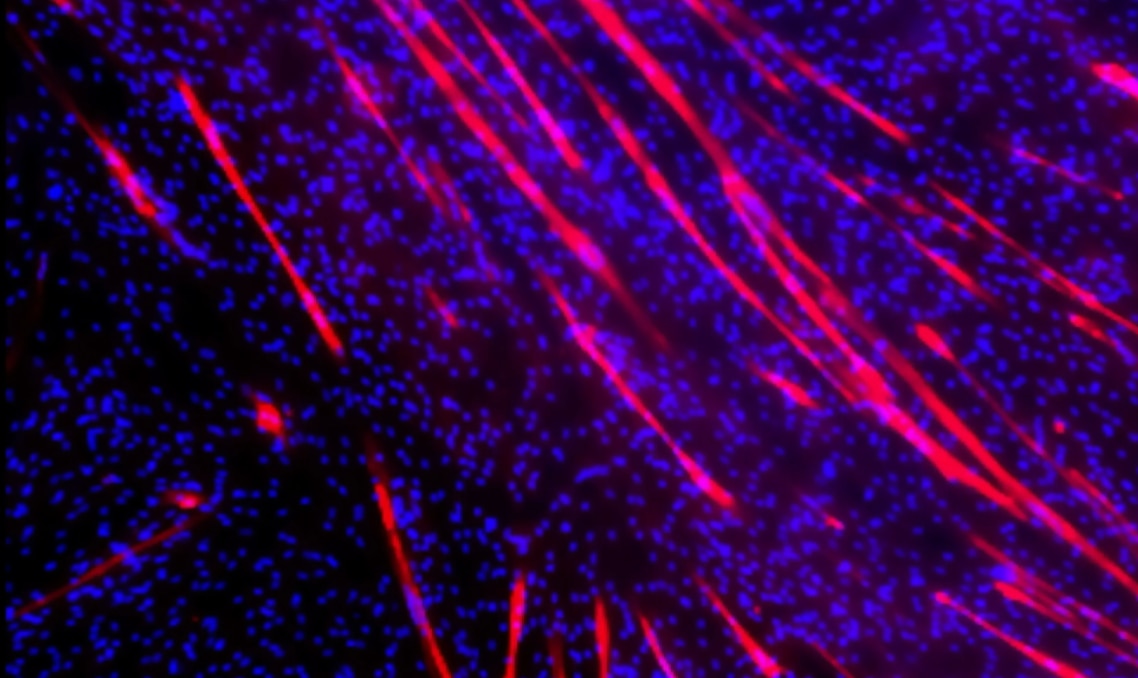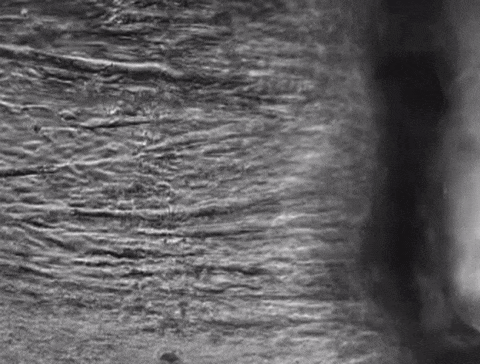Create a free profile to get unlimited access to exclusive videos, sweepstakes, and more!
Space could tell us how not to lose muscle on Earth

Something astronauts have to contend with every day they are in microgravity is potential muscle loss — but it also happens on Earth.
Though the absence of gravity fast-forwards the process of sarcopenia, or muscle atrophy, it still creeps up on those of us who are Earthbound. We lose more muscle the longer we live on this mortal coil. Most people between the ages of 20 and 80 can expect to lose up to 30 percent of their muscle mass. This is why NASA just sent human muscle cells to the ISS with its most recent launch (which SYFY WIRE attended).
Funded by the National Science Foundation (NSF) in collaboration with NASA, Stanford University and the Palo Alto Veterans Research Institute, the Tissue Engineered in Microgravity as a Novel Platform to Study Sarcopenia project (aka Cardinal Muscle) will use the cultured cells to watch sarcopenia in action. It could go way beyond space. Lead researcher Ngan F. Huang of Stanford University believes what is found out up there could possibly influence future treatments for preventing or at least reducing muscle loss on Earth.
“Sarcopenia on Earth and muscle atrophy in space both share some common features, such as general muscle weakness, reduced muscle mass, and reduced capacity for exercise,” she tells SYFY WIRE. “We seek to determine if they share enough similarities that can enable us to model sarcopenia with microgravity.”
Cardinal Muscle’s main objective is to observe muscle cells and see whether they line up on a scaffold of collagen that has been created for them to mimic the linear way in which they align when exposed to our planet’s gravity. What Huang and her team are looking for is how similar sarcopenia on Earth is to atrophy in space. There might be slight differences in the biological mechanisms which cause muscles to waste away in space versus on Earth, but if muscle degradation in both environments overlaps enough, it could mean unprecedented therapies.
Myogenesis is the formation of muscle. It mostly happens in utero during the embryonic phase, when specialized proteins differentiate the types of muscle that will develop. These proteins cause embryonic precursor cells known as myoblasts to express genes specific to muscle. The cells eventually create myotubes, pre-muscle fibers whose nuclei are surrounded by muscle mass. Myofibrils (rod-like structures) make up two types of myofilaments (protein filaments) that make up the microscopic threadlike structures in muscle. These can be destroyed in space.
“It is recognized that muscle progenitor cells in patients with sarcopenia have impaired ability to form muscle fibers,” Huang says. “Therefore, we will evaluate the ability of human muscle progenitor cells to form myotubes and will determine if the samples in microgravity have impaired myotube formation compared to those tested on Earth.”
The cells studied in space will be compared with samples that were both cultured on Earth and taken from patients with sarcopenia. While there have been previous studies done on muscle loss in space, they have mostly focused on astronauts, who have to take intense measures such as wearing gravity suits to keep as much of their muscle mass as possible. Accelerated muscle loss in space is actually a plus for this study. Because muscles tend to degrade so fast in space, scientists won’t have to wait decades to see results.
Cardinal Muscle will compare its findings with both past astronaut studies and observations of muscle cells engineered on Earth. The outcome will determine what the next steps for testing anti-sarcopenia drugs will be, whether they already exist or need to be developed in order to work against the gradual degradation of muscle. Imagine having the same levels of strength your entire life. Sarcopenia may be the disease this experiment is targeted at, but it could could also have benefits for other progressive diseases that slowly wear away at the human body.
“If we can demonstrate that microgravity can accelerate the process of sarcopenia in engineered tissues, our goal would be to use this platform for screening drugs that combat sarcopenia and other diseases that progress slowly on Earth,” Huang says.
Until then, hit the gym, because exercise can slow down and even reverse muscle loss.















